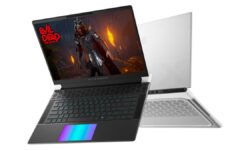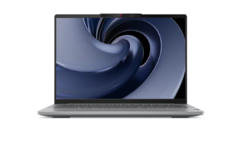Asus VivoBook E203NA
VivoBook E203NA, Asus has made a budget laptop that looks nice but fails to do anything else well. Its battery life is short, its display is poor, the webcam is dark and dim, and the Intel Celeron processor provides middling performance. Though you can’t expect a premium experience in this price range, competing laptops are a lot better than this.
Design
Sure, the VivoBook E203NA is a budget laptop. And while it certainly feels like one, it looks better than some other sub-300 machines. The lid is a grayish blue with a subtle honeycomb pattern and Asus’ logo in silver in the center. It’s a fingerprint magnet, though, so you’ll either have to wipe it off constantly or accept that your PC will look like a crime scene.
It’s far more bland inside, where the 11.6-inch display is surrounded by a thick, unsightly bezel and the deck is made of gray plastic.
The selection of ports
on this notebook is varied, but minimal. Most are on the left side,
where you’ll find a microSD card reader, HDMI output, and USB 3.0 and USB Type-C ports (data only). On the right side are just a headset jack and another USB 3.0 port.
The 2.3-pound, 11.3 x 7.6 x 0.7-inch laptop is slightly lighter than competitors but a pretty standard size. The Lenovo Ideapad 120S is also 0.7 inches thick and weighs 2.4 pounds, while the Dell Inspiron 11 3000 2-in-1 is 0.8 inches thick and 2.9 pounds. The 14-inch HP Stream is a heavier 3.1 pounds and is also 0.7 inches thick.
Display
Most laptop displays
at this price leave something to be desired, and the VivoBook is no
exception. The 11.6-inch, 1366 x 768 display is dim and drab. When I
watched the trailer for “Mary Poppins Returns,” a green kite barely
popped at all against an otherwise gray street, and while Poppins’ red
scarf was loud, her blue coat appeared dim and dark.
The VivoBook’s display covers just 74 percent of the sRGB color gamut, and while that’s better than the Lenovo Ideapad 120S (64 percent) and the Dell Inspiron 11 3000 2-in-1 (69 percent), the HP Stream (82 percent) is more vivid — and all of them were below our budget-laptop average (91 percent)
Software and Warranty
The VivoBook comes with Windows 10 S,
which means that you won’t find any of Asus’ software, because it
literally can’t be installed. Windows 10 S doesn’t allow anything
outside of the Microsoft Store to be installed. That does, however,
allow for bloatware in the Microsoft Store to be preinstalled (as it is on every copy of Windows 10), including Drawboard PDF, Candy Crush Soda Saga, March of Empires: War of Lords, Autodesk SketchBook and Bubble Witch 3 Saga.
Asus sells the VivoBook E203NA with a one-year warranty. See how the company performed on our Tech Support Showdown and Best and Worst Brands ranking.
Keyboard and Touchpad
With 1.7 millimeters of travel and 68
grams of force required to press the keys, the VivoBook’s keyboard is
surprisingly deep. But the keys are made of cheap plastic, and the
11.6-inch body doesn’t allow for a lot of room for your hands. On the
10fastfingers.com typing test, I reached 109 words per minute, which is
average for me. But I had a 5-percent error rate, which is worse than my
usual 2 or 3 percent.
The 4.1 x 2.4-inch touchpad allows for Windows 10 gestures, including swiping apps down into the taskbar with three fingers and tapping four fingers to open the Action Center. It feels a little cheap, as it’s the same plastic as the deck, but it gets the job done.
Audio
The speakers on the VivoBook E203NA don’t produce a lot of detail. When I listened to Tears For Fears’ “Shout,” the song’s vocals and drums were clear, but the electric guitar, synths and bass were all rolled into one big blob. The audio was loud enough to fill a small conference room, but there’s no included software to tune the music to your liking.
Performance
With an Intel Celeron N3350 CPU, 4GB of RAM and 64GB of flash memory, the VivoBook wasn’t exactly built for speed. The computer started lagging when I had just eight tabs open in Google Chrome, one of which was streaming a 1080p clip of Late Night with Conan O’Brien.
On the Geekbench 4 overall performance test, it earned a score of 2,680, which is less than the budget-laptop average (2,929) and the score from the Dell Inspiron 11 3000 2-in-1 (3,179, Pentium N3710) but higher than the Lenovo Ideapad 120S (2,483, Celeron N3350) and the HP Stream (1,817, Celeron N3060).
It took the VivoBook 3 minutes and 10 seconds to transfer 4.97GB of files, or 26.8 MBps. That’s slower than the average (40.9 MBps) and the Ideapad (38.6 MBps) but faster than the Inspiron (22.6 MBps).
Asus’ laptop took 7 minutes and 58 seconds to pair 65,000 names and addresses on our Excel macro test, which is longer than average (7:42) and the time from the Ideapad (7:38).











